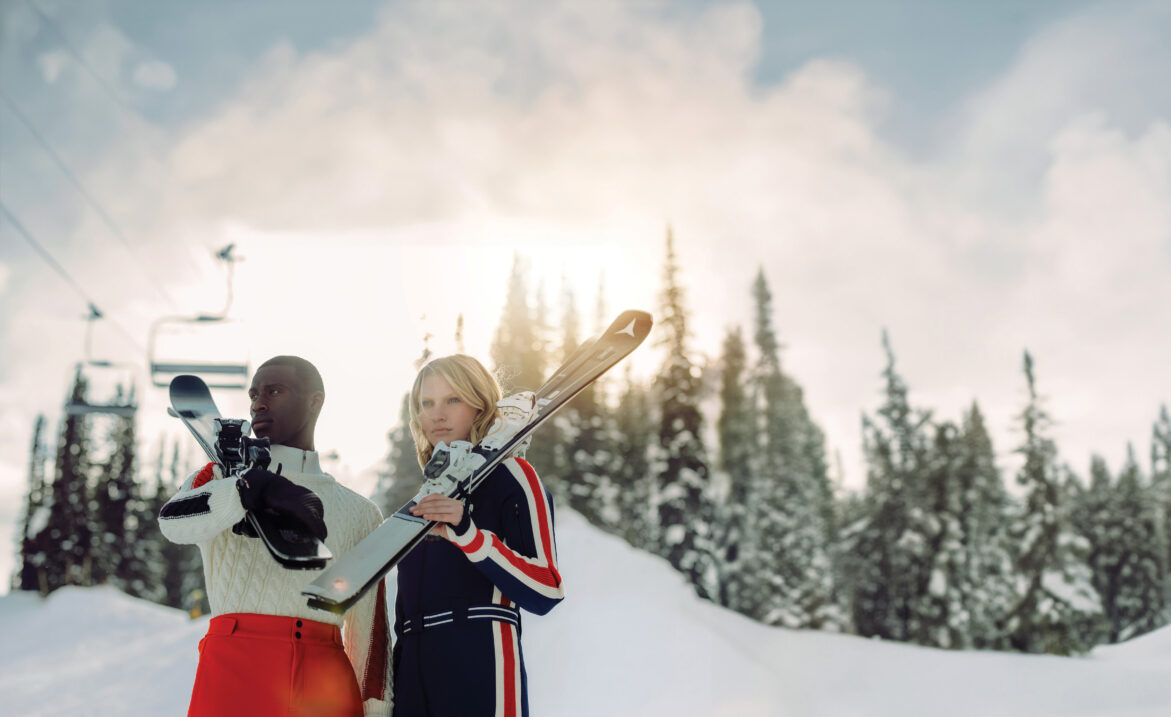
How to Prepare for Your Next Ski Vacation
From Gear to Wildlife, 11 Things to Be Prepared For.
1. Understand the Weather:
The Rocky Mountains, especially Banff and Lake Louise, can experience sudden weather changes. Always check the forecast before heading out and be prepared for varying conditions.
Our favorite is On The Snow, where you can choose your favourite resorts and stay up to date. It is best to access through the app; you can find the download for the applications for Apple and Android here.
Always remember, weather in mountainous regions like Whistler can shift rapidly, so being prepared for a range of conditions is essential for a safe and enjoyable ski trip.
2. Appropriate Ski Gear:
| Gear | Ski | Snowboard |
| Board/Skis | Ensure they’re well-maintained and tuned, also the appropriate height for you. | |
| Bindings | Ensure they’re correctly adjusted to your weight and skill level. | Snowboarders typically ride in one of two stances: goofy or regular. If you’re uncertain about which is right for you, consult with a snowboarding expert at the resort. The correct setup can significantly enhance your riding experience and make your day on the slopes more enjoyable. |
| Boots | Ensure they fit well. Ill-fitting boots can lead to discomfort and injuries. | |
| Poles | Essential for balance and navigation for skiers. | N/A |
3. Layer Up:
- Start with a moisture-wicking base layer to keep sweat away from your skin.
- Add an insulating layer (like fleece or down) to retain body heat.
- Finish with a waterproof and windproof outer layer.
Local Tips
1. Merino Wool socks are a must, as they warm your feet while wicking away moisture.
2. Grab some Hot Hands (Hand warmers) on especially cold days. There are also ones you can tap to the bottom of your feet.
4. Essential Accessories:
Basic accessories:
- Helmet: Critical for safety to protect against falls and collisions.
- Goggles: Protects eyes from snow, glare, and UV rays, and enhances vision in different lighting conditions.
- Snow Jacket: An essential outer layer, it should be waterproof, windproof, and breathable. Features like detachable hoods and snow skirts add to its functionality.
- Snowpants: Key for lower body protection, they should be insulated and waterproof, offering mobility without sacrificing warmth.
- Gloves/Mittens: Waterproof and insulated to keep hands warm.
Great to have, but not necessary:
- Neck Gaiter or Balaclava: Provides added warmth and protection from wind and snow.
- Ski/Snowboard Socks: Specific thickness and material designed for warmth and moisture-wicking.
- Backpack: Useful for backcountry trips, should be snow-specific with straps for equipment.
- Avalanche Safety Gear (for backcountry): Including a beacon, probe, and shovel.
- Wrist Guards (more common for snowboarders): Helps prevent wrist injuries during falls.
- Sunscreen and Lip Balm: Protects against sunburn and windburn at higher altitudes.
- Ski/Snowboard Lock: Useful to secure your equipment when not in use.
5. Altitude Awareness:
Banff and Lake Louise are at significant altitudes, some of the highest in Canada. It’s essential to acclimatize, especially if you’re coming from sea level. Drink plenty of water and be aware of the symptoms of altitude sickness.
6. Avalanche Safety:
If you plan to venture into backcountry areas, be informed about avalanche conditions. Take an avalanche safety course, and always carry a beacon, shovel, and probe.
Learn more about Avalance Safety in Banff National Park on Park’s Canada’s website.
7. Stay on Marked Trails:
Especially in areas like the Rocky Mountains, it’s essential to stay within resort boundaries unless you’re with a guide.
8. Ski & Snowboard School:
If you’re a beginner or it’s been a while, consider taking a lesson. Both Banff Sunshine Ski School and Lake Louise Ski Resort offer excellent programs to hone your skills.
9. Stay Hydrated and Nourished:
The physical exertion combined with the dry mountain air can quickly lead to dehydration. Carry water and consume energy-rich foods. Some skiers carry items like granola bars, trail mix, energy bars and other items, which can be found at the cafes in The Guide’s Pantry at Fairmont Lake Louise, STOCK at Fairmont Banff Springs and Rimrock Cafe at The Rimrock Resort Hotel.
10. Respect Mountain Wildlife:
The Rockies are home to diverse wildlife. If you encounter animals, keep your distance and avoid feeding them.
Learn more information on how to stay safe at Parks Canada.
11. Know the Ski Code:
Familiarize yourself with the skier’s responsibility code, which provides safety guidelines for behavior on the slopes.
Source: https://www.skipatrol.ca/safety-injury-prevention/responsibility-codes/
